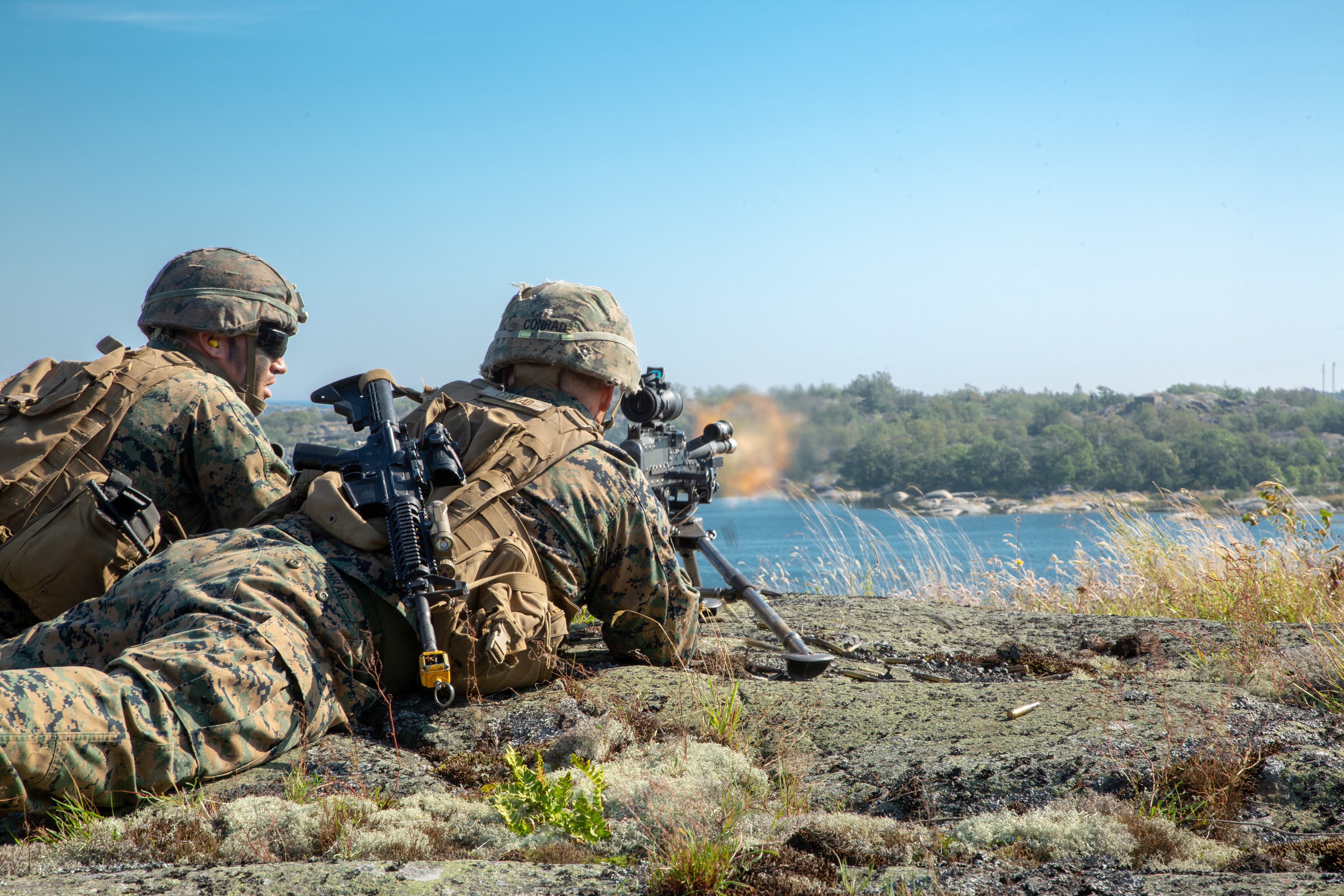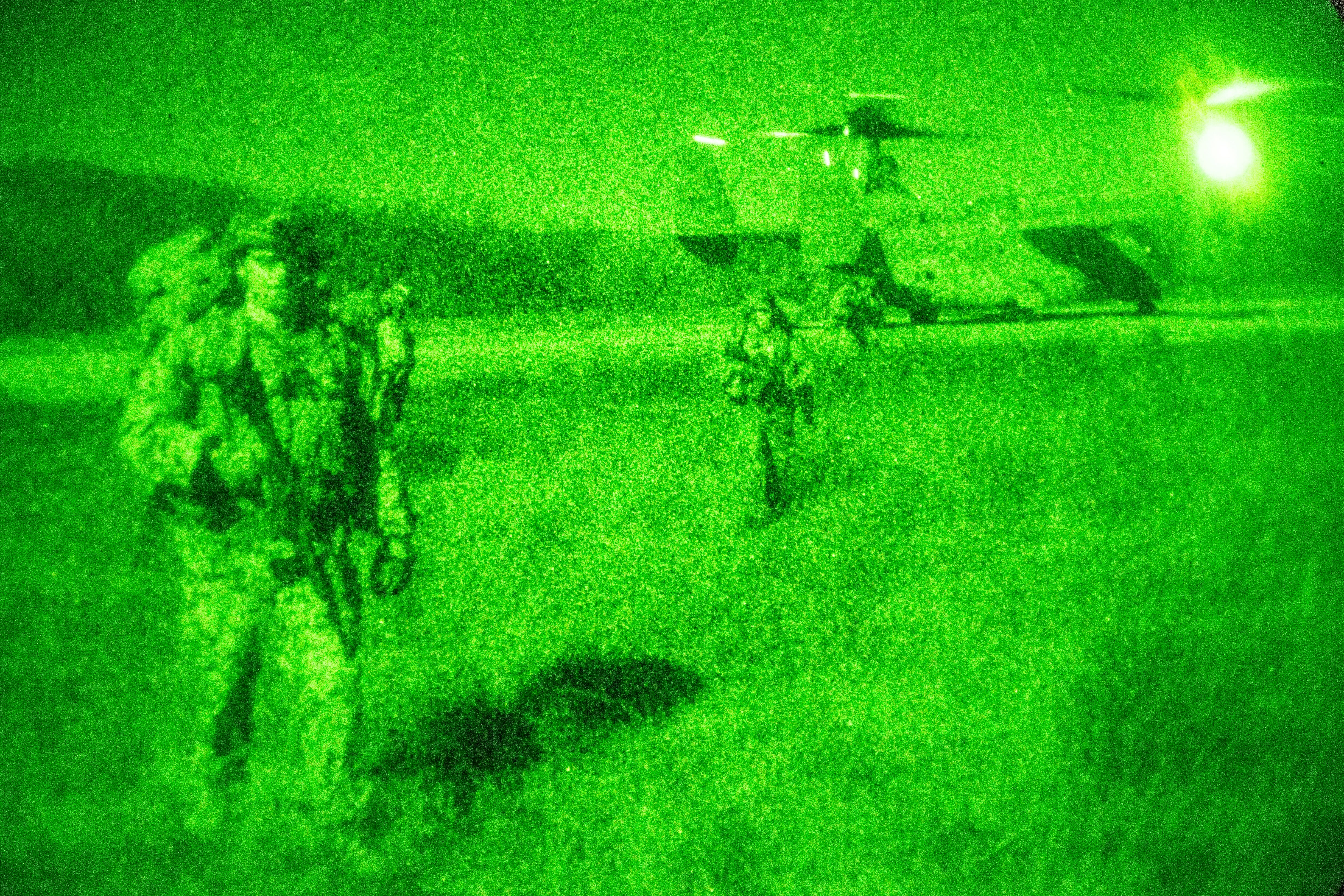Marine Corps Deputy Commandant for Information Lt. Gen. Lori Reynolds said modernizing the service’s network will be the first of her four priorities in 2020.
“Our first priority (...) is this whole idea of assured enterprise command and control — so all the work that we’re doing [is] to build and fight a modernized network,” Reynolds told reporters at a media availability Jan. 3.
That effort will include adopting artificial intelligence, incorporating a more mobile cloud and possibly bringing software developers into the Marine Corps.
“We’re doing a lot of work on getting ourselves organized for a modernized network. How do we think about maneuvering the network in a contested environment? So I think our [communications] community has a lot of work ahead of it to kind of just think differently about how we train, how we organize. I think we’ll see changes to our [communications] formations given force design,” Reynolds said. “There’s a lot of work that we have to do.”
Reynolds oversees operations in the information environment, including cyber, electronic warfare and signals intelligence. She held a media availability Jan. 3 to discuss the recently created Marine Expeditionary Force Information Groups (MIGs) and her goals for the coming year.
In addition to modernizing the network, Reynolds laid out three other priorities: institutionalizing information as a war-fighting function, building an integrated naval operations in the information environment capability and modernizing multi-domain intelligence, surveillance and reconnaissance.
RELATED

The second priority includes formalizing many of the efforts around operations in the information environment, to include creating commonly accepted and understood definitions for the terms thrown around.
“The language is all over the place right now. We have [information operations, we’ve got information warfare, we’ve got operations in the information environment], we’ve got everything. We’re at that point where everybody is thinking about it, but you have to take a minute and say, 'When you say IW, what are you talking about?’ (...) We don’t talk with enough specificity right now to make sure that we’re not talking past each other,” Reynolds said.
One difficulty has been a common vocabulary in integrating the efforts of the the Marines and Navy. Each service has a separate history of operations in the information environment.
“We are struggling in the department with the language around what used to be called information operations,” she said. “One of the things that distinguishes the Marine Corps from the other services is that we include [the] Inform function, we include communications strategy, in how we think about fighting in the information environment. So what we say in public, how we use information as a war-fighting tool or as a condition tool, how we battle for the truth and how we use the truth is very important to us.”
A communications strategy has not been part of the Navy’s understanding of operations in the information environment, Reynolds said, so that and other details still need to be worked out between the services.
A third priority is integrating operations in the information environment between the Marines and the Navy — essentially ensuring that the Marine Corps’ efforts are in line with what the Navy is doing.
Finally, Reynolds wants to prioritize modernization of intelligence, surveillance and reconnaissance. That effort would cover a range of capabilities from incorporating new artificial intelligence tools to understanding and using new intelligence sources.
“This would include new [open-source intelligence] capabilities; how do we use publicly available information; how do we do intelligence support to space, intelligence support to cyber? All of these things are really new capabilities,” said Reynolds. “There’s a lot of change required.”
Reynolds also talked about the progress made in establishing Marine Expeditionary Force Information Groups.
The three Marine Corps groups established for the information environment declared initial operational capacity in 2019 and Reynolds says she plans to formalize the organizations in 2020.
“With the [Marine Expeditionary Force Information Groups], what we’ve done is we want to integrate all these capabilities in a more powerful way. We want to integrate intelligence and communications and electronic warfare and SIGINT and cyber and space in a way that provides a more holistic picture of what is happening in that environment,” she said.
RELATED

The Marine Expeditionary Force Information Groups have been bolstered in the past 12 months with defensive cyber and electronic warfare capabilities, as well as military information support companies and communications strategy companies. Additionally, a Marine Expeditionary Force support battalion will offload some of the man, train and equip pieces to free up the information group commander to focus on the information fight, said Reynolds. All three information groups declared initial operating capability last year and took part in a major exercise.
Nathan Strout covers space, unmanned and intelligence systems for C4ISRNET.








